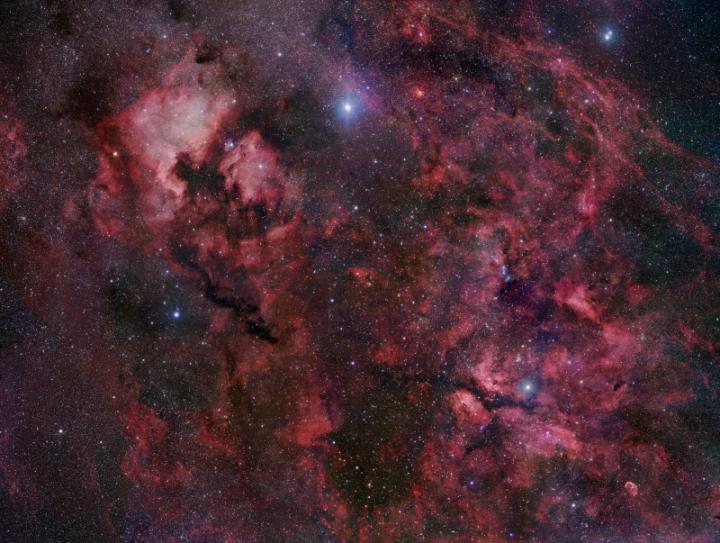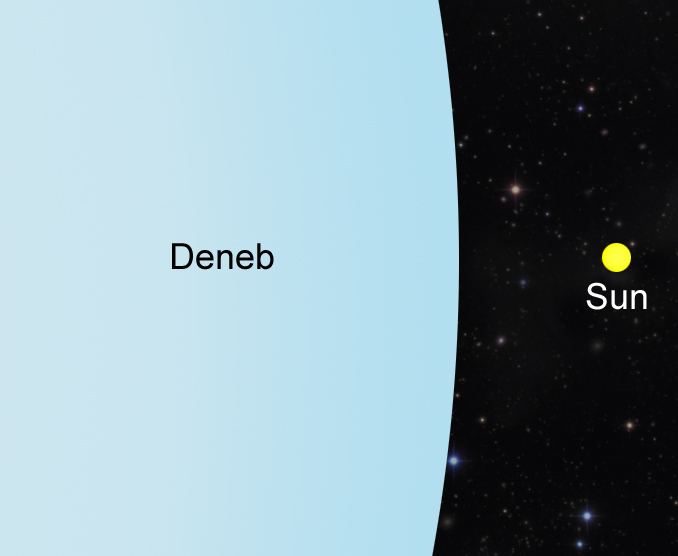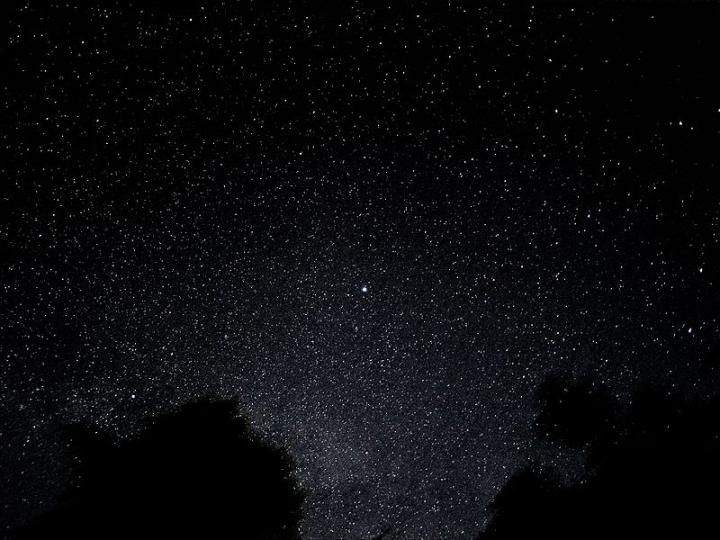Look straight up at a star—and see where you are heading! Something very cool is overhead.
Next clear night, look straight up just as full darkness falls. (No other time will work because the stars move as the night wears on.)
A single bright star sits at the zenith or (if you’re in a southern state) pretty darn close. Not to be confused with an even brighter star—Vega—which is quite high but not really overhead.
What Star is Directly Overhead?
The overhead star is Deneb. It’s the most distant and probably the most luminous star in all the heavens. Even more cool is that it marks the direction toward which we are heading in the universe.

The bright white star Deneb sits at top center of this photo.
Deneb is a rare white supergiant. It shines with the same brilliance as 60,000 suns. And it’s huge. It’s one of the largest white stars known. If we represented Deneb as a ball the size of an eight story building, our planet Earth would be the period at the end of this sentence.

There’s nothing else quite like it. It’s so luminous that if it were as close to us as the nearest stars, Deneb would match the brilliance of the full Moon. Our night sky would never get fully dark when it was out.
Deneb Lies Always Ahead of Earth
As our galaxy rotates, Deneb lies directly ahead of us in the whirling carousel. It marks the direction of our motion. It’s like a reconaisance scout, checking out what’s in front of us. Traveling at 144 miles per second, our Earth and the Sun will get to Deneb’s current position in about two million years. But since it also takes part in our galaxy’s spin, it will always lie ahead of us.

We’ve had trouble trying to pin down Deneb’s distance from Earth. Twenty years ago, the European Hipparchos satellite measured its distance as 4,500 lightyears. If this were true, then Deneb must be astonishingly shining with the light of 200,000 Suns in order to appear as bright as it does at that breathtaking distance.
But many astronomers question the Hipparchos data. So Deneb’s controversial distance has been revised downward. Nobody’s completely sure of the true figure. Some say 2,500 lightyears or even 1,500 and if true, it’s STILL the most distant bright star. And either the most luminous, or in a virtual tie with Rigel in Orion’s foot.
Enough hair splitting. It’s an astonishing star and it marks the direction toward which we are all rushing. More than enough reason to look straight up at nightfall.












